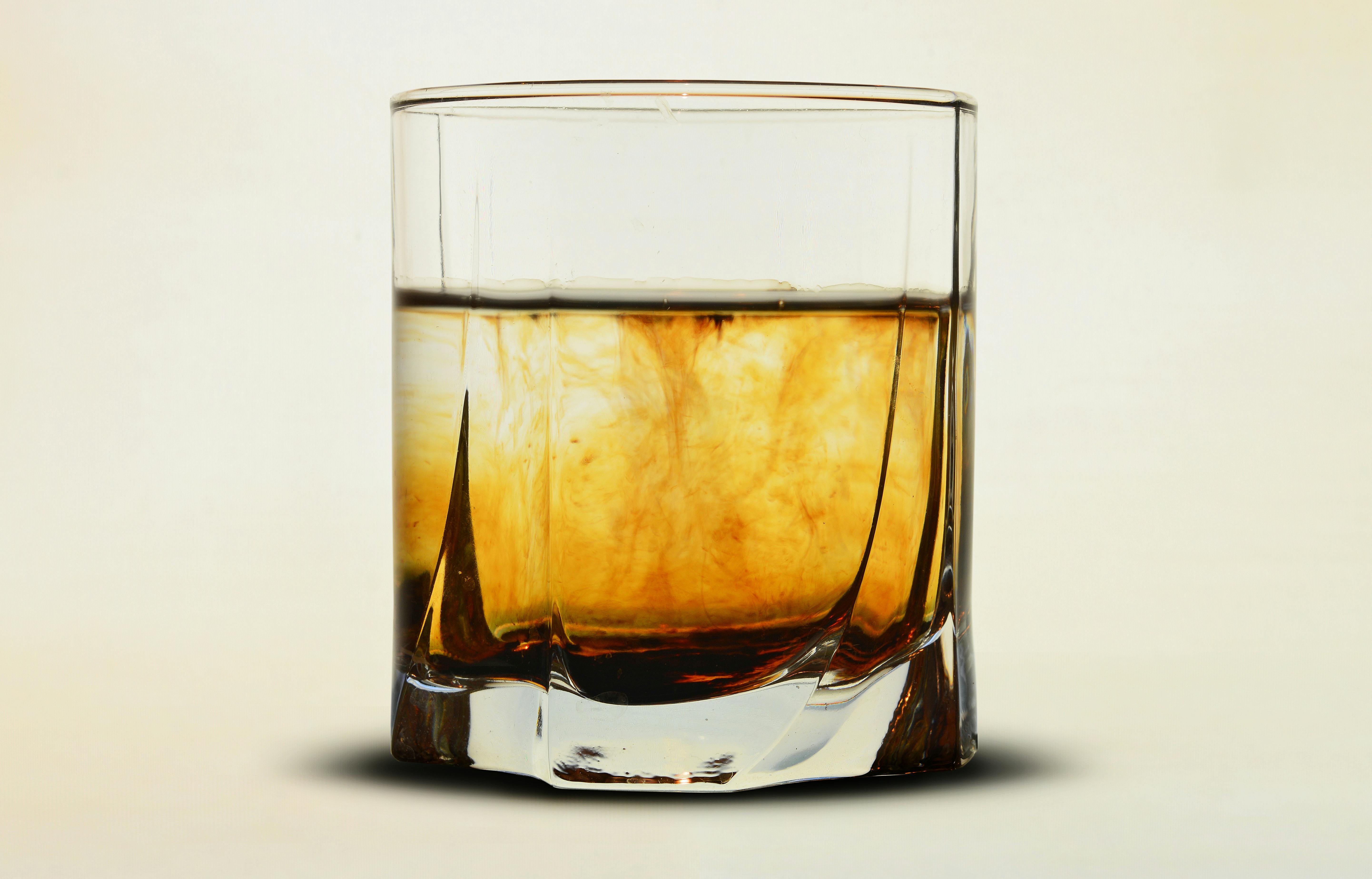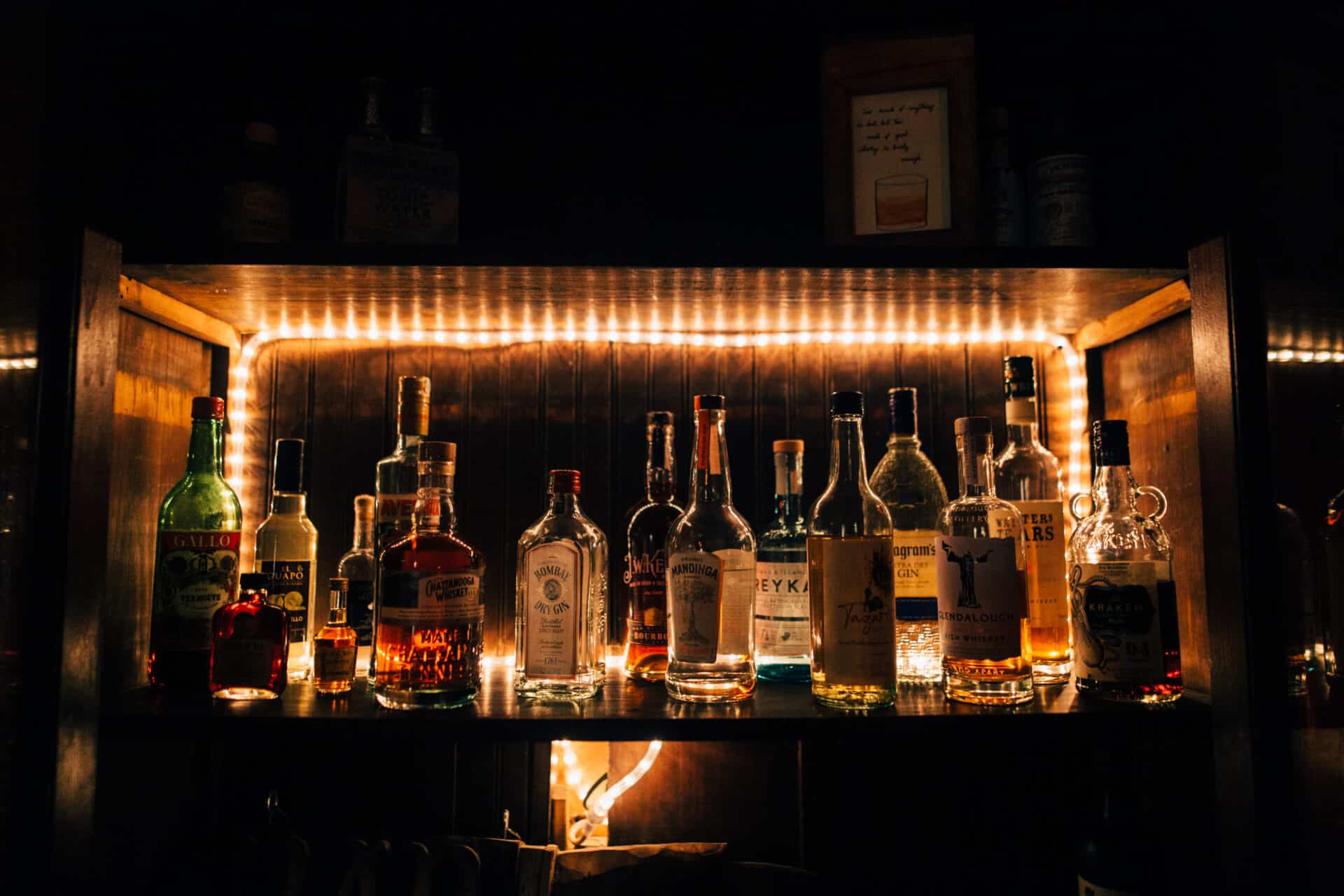Bourbon is a type of distilled alcohol made from a mash of at least 51% corn, as well as other grains such as malted barley and rye. The mash is then fermented and distilled to create the whiskey-like spirit. The result is usually aged in charred white oak barrels for at least two years, giving it its distinct flavor and color. Bourbon has become one of the most popular types of whiskey in the United States, especially in the South.Bourbon is a type of American whiskey distilled from corn and aged in charred oak barrels. It is characterized by its amber color, sweet flavor, and notes of vanilla, caramel, and toffee. Bourbon is traditionally made in Kentucky, but can be produced anywhere in the United States.
Distilling
Distilling is the process of separating a mixture of liquids into its component parts. It involves boiling a liquid to vaporize the desired components, then condensing the vapor back into liquid form. Distilling is used to purify liquids, create essential oils, and produce alcoholic beverages such as whiskey and vodka. Distillation can also be used to create fuel for vehicles, such as ethanol or biodiesel. The distillation process is highly selective and is able to separate liquids based on their different boiling points. This makes it possible to isolate specific compounds from complex mixtures.
Types of Grain Used to Make Bourbon
Bourbon is a type of whiskey that is made in the United States. It must be made with at least 51 percent corn and aged in new, charred oak barrels. The other grains used to make bourbon are typically rye, wheat, and barley. While these grains may vary, they all contribute to the overall flavor and texture of bourbon.
Rye is a common grain used in the production of bourbon. It contributes to the spiciness of the whiskey, helping to balance out the sweetness from the corn. Rye also provides an earthy flavor and enhances the complexity of bourbon.
Wheat is also often used in making bourbon. It helps to add smoothness and a slightly sweet flavor to the whiskey. Wheat can also help bring out some of the other flavors in the mash bill, such as nuts or vanilla notes.
Barley is another grain that may be used in making bourbon. It adds a nutty flavor and helps soften some of the harsher notes from rye or wheat. Barley can also add body and mouthfeel to whiskey, creating a fuller-bodied spirit with more depth than spirits made with only corn or rye.
The combination of these grains creates a unique flavor profile that is unique to each distillery and brand of bourbon. While each ingredient contributes something different, all are essential for making quality bourbon that has rich flavors and complexity.
How is Bourbon Distilled?
Bourbon is a type of whiskey that is distilled from a mash made up of at least 51% corn. It is usually distilled in copper stills, which give it its distinct flavor. The distillation process begins with the mashing of grain, which is then cooked and cooled in order to create the wort. The wort is then fermented, creating a low-alcohol wash. This wash is then distilled in the stills, where it is heated and vaporized. As the vapor passes through the stills, the alcohols are separated from each other and collected into barrels for aging. Once it has been aged for at least two years, it can be called bourbon whiskey.
The distilling process also involves several other steps that are important to create bourbon with its distinctive flavor profile. During aging, bourbon whiskey absorbs flavors and aromas from the charred oak barrels it’s stored in. The charring process gives bourbon its distinct color, aroma and taste. To ensure consistency in flavor profile over time, distillers often blend different batches of aged whiskey before bottling them as one product.
Bourbon whiskey must also meet certain regulations set forth by the United States government in order to be labeled as such. These regulations include that it must be aged in new charred oak barrels for at least two years, that no colorings or flavorings may be added after distillation, and that it must be bottled at no less than 80 proof (40% ABV). Following these regulations helps ensure quality control for this beloved spirit.
The History of Bourbon Distilling
Bourbon distilling has a long and storied history in America, as it has been practiced for nearly two centuries. The first recorded instance of bourbon production was in 1789 when Elijah Craig, a Baptist minister from Kentucky, began distilling whiskey from corn. Since then, the art of bourbon-making has grown and evolved over the years.
In 1820, Congress passed the West Act, which stated that all bourbons must be aged in charred oak barrels. This stipulation marked the beginning of what is now known as the Kentucky Bourbon Trail – a trail of distilleries located throughout the state of Kentucky that produce some of the world’s finest bourbons.
By the late 1800s and early 1900s, bourbon production had become an important industry in Kentucky. The state’s climate – with its hot summers and cold winters – was ideal for aging bourbon to perfection. In 1964, Congress declared bourbon as “America’s Native Spirit” and granted it certain legal protections as well as certain labeling requirements to ensure authenticity.
Today, bourbon distilling is a craft that has been perfected over generations. Many of the techniques used today have been handed down through families who have devoted their lives to producing some of the best bourbons in America. From small family-owned operations to large commercial producers, there is no shortage of great bourbons being crafted in Kentucky today.

The Distilling Process and Its Effect on the Flavor of Bourbon
The distilling process plays a major role in the flavor of bourbon whiskey. Distillation is the process of separating alcohol from water, and it is how bourbon is produced. During this process, the alcohol molecules are separated from the water molecules, leaving behind a concentrated liquid known as “distillate.” This distillate is then aged in charred oak barrels, which gives bourbon its distinct flavor and color.
The distillation process affects the flavor of bourbon in several ways. First, it helps to remove impurities from the liquids used to make the whiskey, resulting in a smoother taste. Second, it helps to concentrate certain compounds that contribute to the flavor, such as esters and phenols. Finally, it reduces the amount of water present in the whiskey, resulting in a higher alcohol content and more intense flavor.
During distillation, different types of stills can be used to produce different types of spirits. For example, pot stills are commonly used to produce bourbons with a richer, sweeter flavor profile while column stills are typically used for bourbons with a lighter taste. Additionally, different aging techniques can also influence the final flavor of bourbon whiskey; longer aging times tend to result in darker colors and more intense flavors while shorter aging times result in lighter colors and milder flavors.
Overall, understanding how distillation affects bourbon’s flavor is key to producing high-quality spirits with unique characteristics that set them apart from other whiskeys. By utilizing different types of stills and aging techniques, master distillers can create distinct and complex flavors that appeal to whiskey enthusiasts all over the world.
Different Styles of Bourbon
Bourbon is a type of whiskey made primarily from corn, and is known for its distinctive taste and aroma. It has a long history in the United States, with many different styles of bourbon having developed over the years. These styles vary depending on the type of grain used, the aging process, and other factors. Some popular styles of bourbon include wheated bourbon, traditional bourbon, high-rye bourbon, and craft bourbons.
Wheated bourbon is made with wheat as the secondary grain, instead of rye. This gives it a softer flavor than other bourbons, with a hint of sweetness. Traditional bourbon uses a mixture of corn and rye as its grains, resulting in a bolder flavor that can be slightly spicy or smoky. High-rye bourbons are made with an increased proportion of rye to corn, leading to an intense flavor profile with notes of pepper and spice.
Craft bourbons are produced by small-scale distilleries using unique recipes and techniques to create distinctive flavors. These craft bourbons often use rare or uncommon ingredients such as smoked grains or fruit-infused spirits to achieve complex flavors that set them apart from traditional bourbons.
No matter what style you choose, there is a wide variety of flavors available in bourbon that make it an enjoyable spirit for any occasion. Whether you prefer classic or craft varieties, there’s sure to be something for everyone when it comes to this timeless American whiskey!
Does Aging Affect the Taste of Bourbon?
Aging is a key process in the production of bourbon whiskey. This aging process can have a major impact on the taste of the final product. Over time, the whiskey absorbs flavor and aroma compounds from the wood barrel it is stored in. These compounds contribute to the flavor profile of bourbon. The longer that bourbon is aged, the more intense and complex its flavor becomes. Aging also affects other characteristics of bourbon, such as its aroma and color.
The aging process begins by transferring bourbon from its original copper or stainless steel container into charred white oak barrels. The barrels are then stored in a warehouse for several years, allowing them to absorb flavors from the wood and develop complexity over time. During aging, a portion of the liquid evaporates through small pores in the barrel walls. This is known as “the angel’s share,” and it can range from 2-4% per year depending on environmental conditions in the warehouse.
The taste of a particular bourbon will depend on how long it has been aged, as well as how it was stored during that time. In general, bourbons that are aged for longer periods tend to be smoother with deeper flavors than those aged for shorter periods. They may also include notes of caramel, vanilla, cinnamon, nutmeg, oak and other spices that develop over time.
In conclusion, aging plays an important role in determining the taste of bourbon whiskey. Longer aging times typically result in deeper flavors and more complexity while shorter aging times produce lighter flavors with fewer nuances.

Conclusion
Bourbon whiskey is a type of American whiskey made from corn, rye, barley and other grains. It has a distinct sweet and smoky flavor that comes from the aging process in charred oak barrels. Bourbon has become increasingly popular over the years, especially in the United States.
The production of bourbon whiskey is tightly regulated by federal law and must adhere to certain standards in order to be labeled as bourbon. Most importantly, it must be made with at least 51% corn, aged in new charred oak barrels, and distilled at no more than 160 proof (80% alcohol). Additionally, all bourbons must be bottled at 80 proof or higher.
Bourbon has become an iconic part of American culture. Its distinctive flavor and history make it an excellent choice for enjoying neat or in a variety of cocktails. From classic old-fashioneds to modern takes on Manhattans, bourbon can be enjoyed in a variety of ways. No matter how you choose to enjoy it, bourbon is sure to add some extra flavor and fun to your next gathering!

